- Hardiness Zone: 5-9 Perennial
- Hardiness Zone: 2-5 Annual
Seed Depth: 1/4 inch
Seed Spacing: 8–12 inches
Row Spacing: 12–18 inches
Sunlight: Full sun
Days to Sprout: 10–21 days
Days to Maturity: 75–90 days
Growth Habit: Low-growing, spreading perennial
Sunlight: Prefers full sun with at least 6–8 hours of direct sunlight daily.
Soil Type: Thrives in well-drained, sandy or loamy soil with a pH of 6.0–8.0. Avoid heavy, waterlogged soils.
When to Plant: Sow seeds indoors 6–8 weeks before the last frost or directly outdoors after the danger of frost has passed.
Direct Sowing: Scatter seeds thinly on the soil surface and lightly cover with a thin layer of soil or sand.
Indoor Sowing: Start seeds in trays and transplant seedlings when they are 2–3 inches tall.
Succession Planting: Not typically needed; thyme is a perennial that regrows each year.
Watering: Water sparingly; thyme prefers dry conditions once established. Allow soil to dry between waterings.
Fertilizing: Minimal fertilization is needed. Apply a light layer of compost in spring to encourage new growth.
Pruning: Trim plants regularly to maintain a compact shape and encourage bushy growth. Remove woody stems in early spring.
Pest and Disease Control: Generally pest-resistant, but watch for spider mites or fungal diseases in humid conditions. Ensure proper spacing for airflow.
When to Harvest: Begin harvesting leaves once plants are well-established, typically 75–90 days after planting.
How to Harvest: Snip sprigs with scissors or gently strip leaves from stems. Harvest in the morning for the best flavor.
Seed Collection: Allow flowers to dry on the plant and collect seeds from the spent blooms.
Storing Seeds: Store seeds in an airtight container in a cool, dry place.
Why You’ll Love It
Bold Flavor: Offers a warm, peppery, and slightly minty taste — essential in countless savory recipes.
Perennial and Hardy: Grows back year after year in zones 5–9 with minimal care.
Pollinator Magnet: Tiny pink-lavender flowers attract bees, butterflies, and other beneficial insects.
Low Maintenance: Thrives in poor, dry soils and makes a fragrant, edible groundcover.
Plant Characteristics
Height: 6–12 inches
Growth Habit: Low, spreading perennial with small, oval leaves and woody stems
Leaf Type: Tiny gray-green leaves with strong aroma
Days to Maturity: 85–95 days
Hardiness: Perennial in zones 5–9
Flavor and Culinary Uses
Flavor: Earthy, slightly minty, and sharp — classic herb garden staple
Culinary Uses: Excellent in soups, stews, marinades, roasted meats, vegetables, and bread seasoning
Companion Planting Tips
Good Companions: Cabbage, tomatoes, strawberries, and rosemary
Avoid Planting Near: Moisture-loving herbs like basil or cilantro
Bonus Benefit: Helps repel cabbage worms and whiteflies in vegetable gardens
Common Issues and Solutions
Woody Growth: Trim back regularly to encourage soft, flavorful new growth
Overwatering: Allow soil to dry between waterings — thyme prefers slightly dry conditions
Weak Flavor: Harvest just before flowering for the strongest essential oil concentration
Seeds Per Packet
| 250mg | Approximately 134 |
| 750mg | Approximately 402 |
Why You’ll Love It
Bold Flavor: Offers a warm, peppery, and slightly minty taste — essential in countless savory recipes.
Perennial and Hardy: Grows back year after year in zones 5–9 with minimal care.
Pollinator Magnet: Tiny pink-lavender flowers attract bees, butterflies, and other beneficial insects.
Low Maintenance: Thrives in poor, dry soils and makes a fragrant, edible groundcover.
Plant Characteristics
Height: 6–12 inches
Growth Habit: Low, spreading perennial with small, oval leaves and woody stems
Leaf Type: Tiny gray-green leaves with strong aroma
Days to Maturity: 85–95 days
Hardiness: Perennial in zones 5–9
Flavor and Culinary Uses
Flavor: Earthy, slightly minty, and sharp — classic herb garden staple
Culinary Uses: Excellent in soups, stews, marinades, roasted meats, vegetables, and bread seasoning
Companion Planting Tips
Good Companions: Cabbage, tomatoes, strawberries, and rosemary
Avoid Planting Near: Moisture-loving herbs like basil or cilantro
Bonus Benefit: Helps repel cabbage worms and whiteflies in vegetable gardens
Common Issues and Solutions
Woody Growth: Trim back regularly to encourage soft, flavorful new growth
Overwatering: Allow soil to dry between waterings — thyme prefers slightly dry conditions
Weak Flavor: Harvest just before flowering for the strongest essential oil concentration
Seeds Per Packet
| 250mg | Approximately 134 |
| 750mg | Approximately 402 |

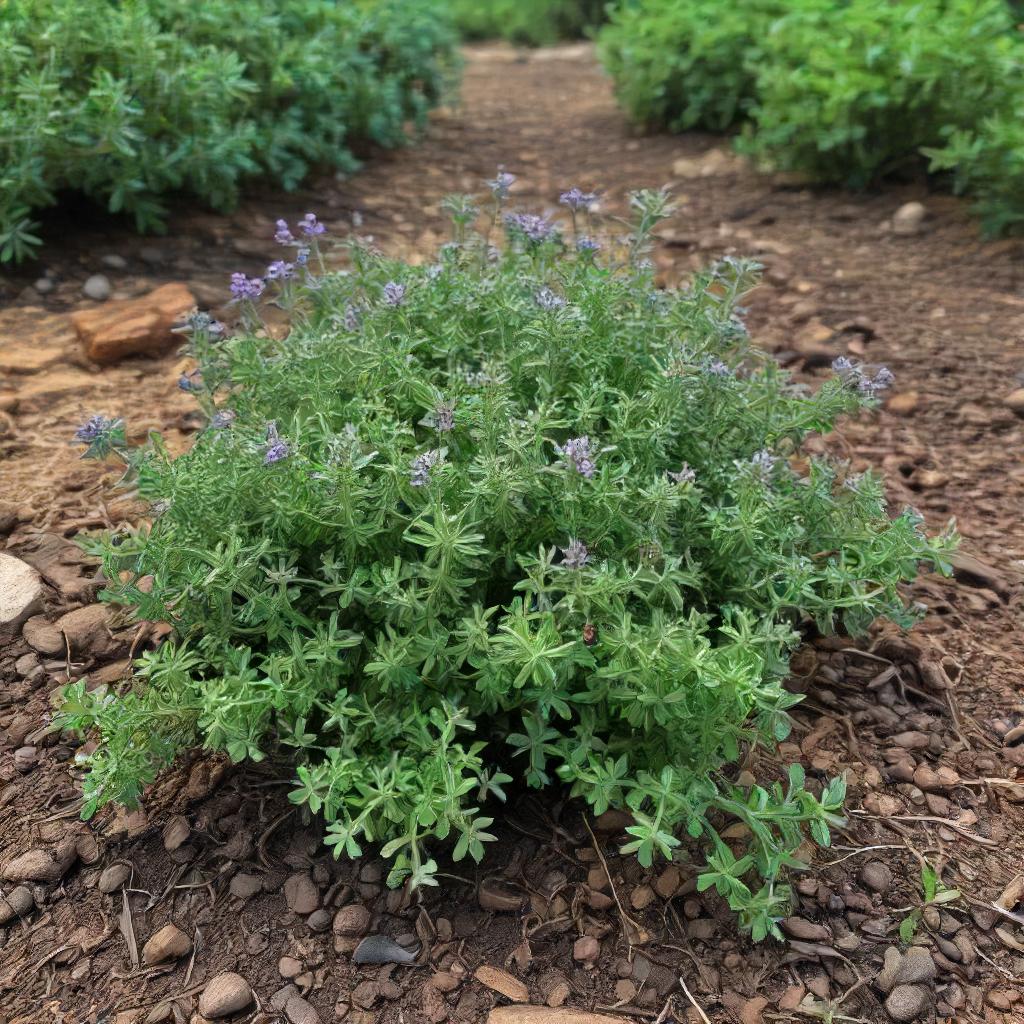
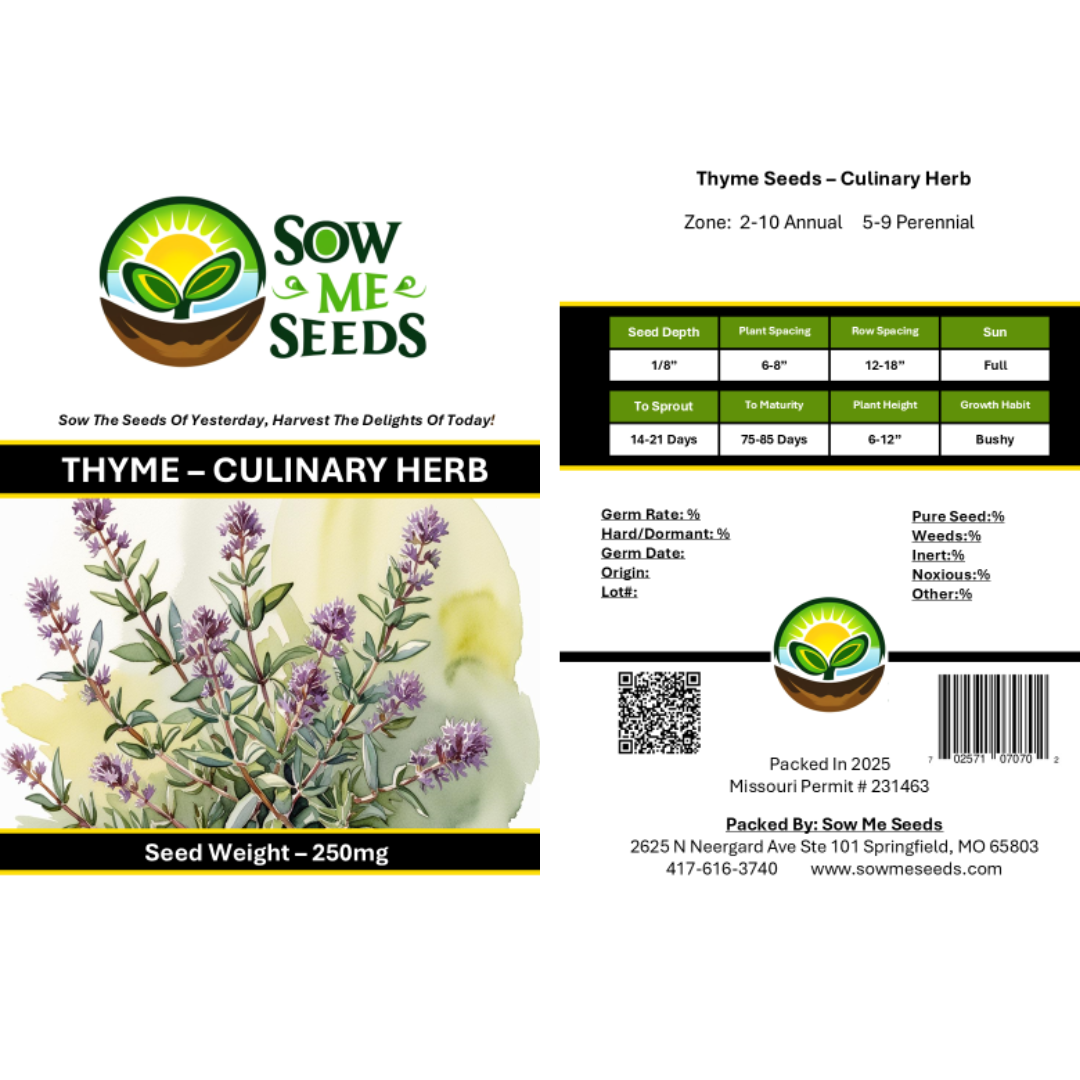
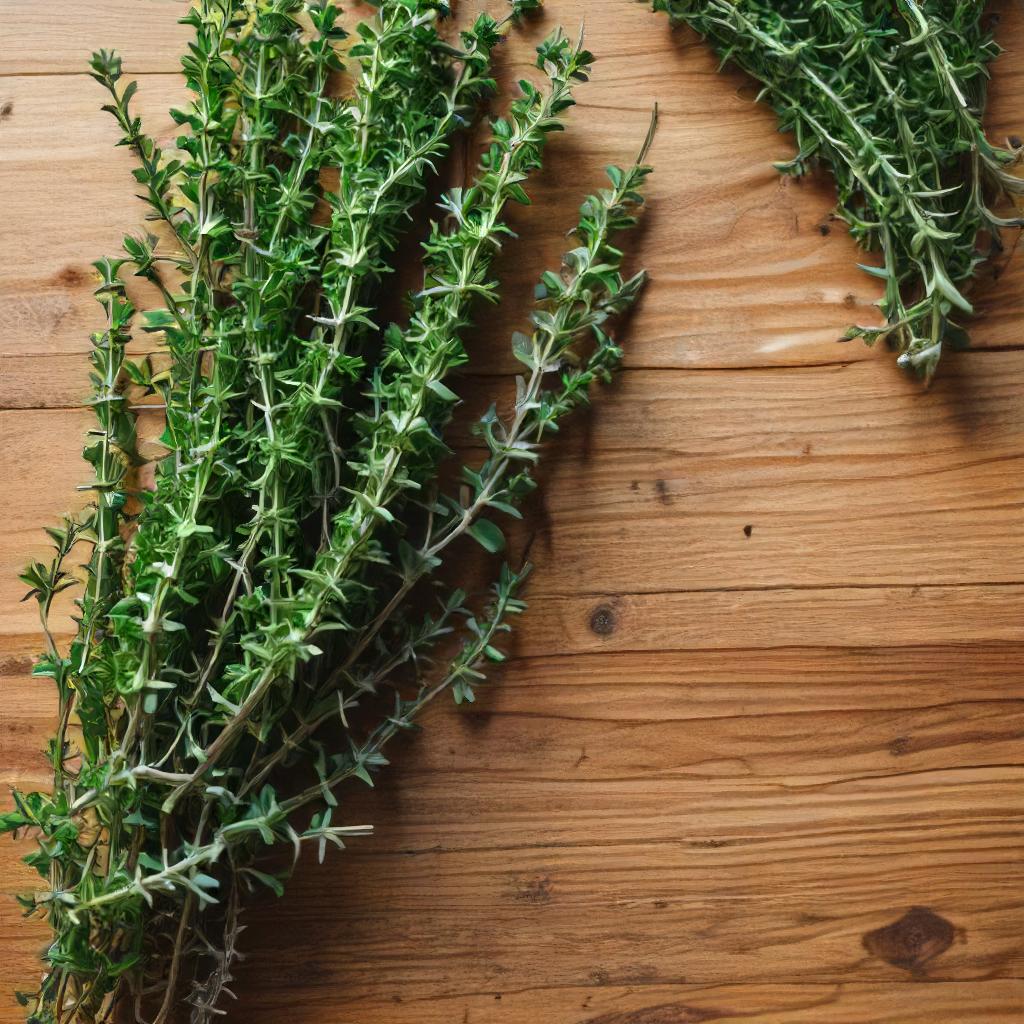
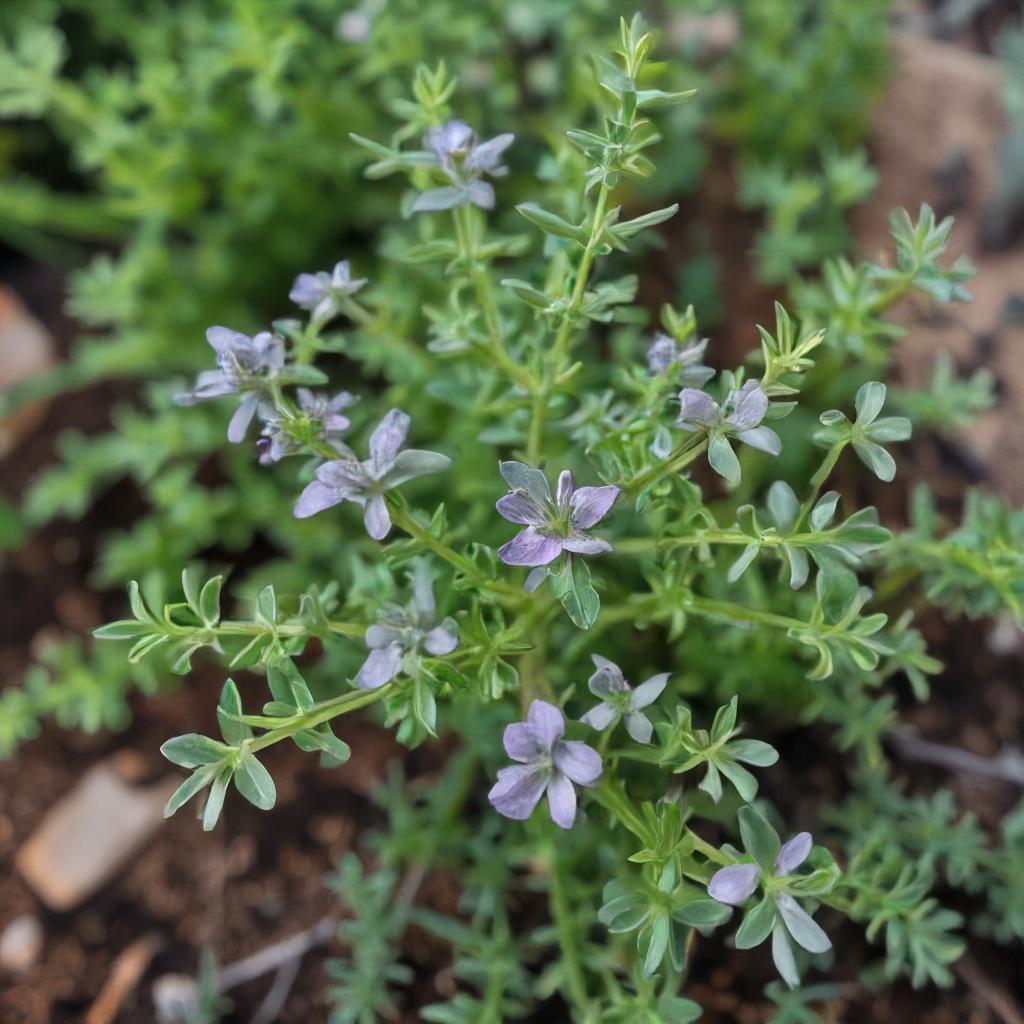
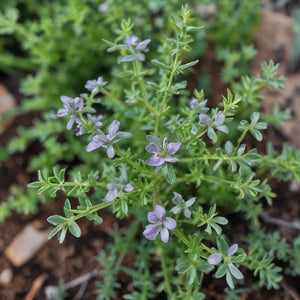
Share and get 15% off!
Simply share this product on one of the following social networks and you will unlock 15% off!